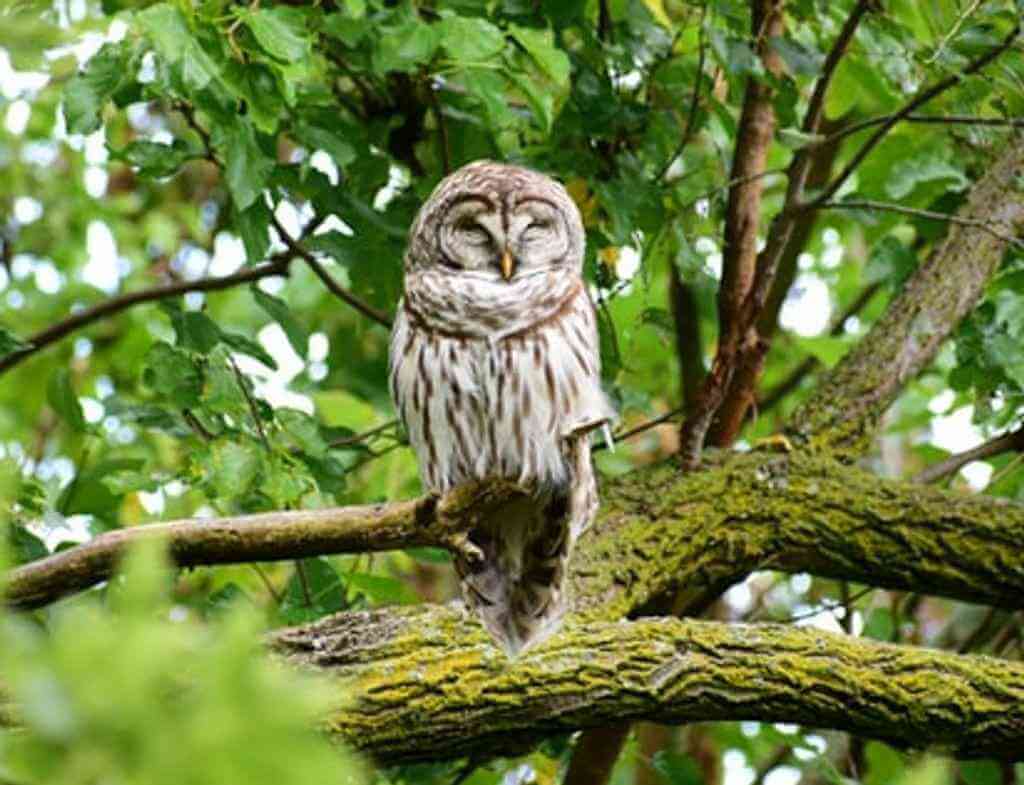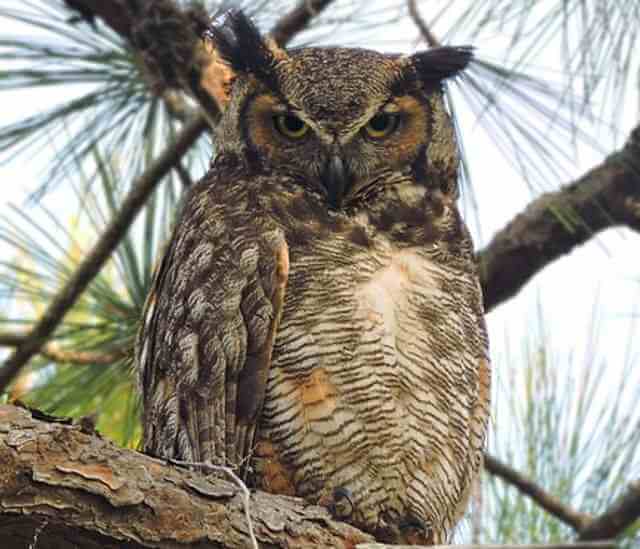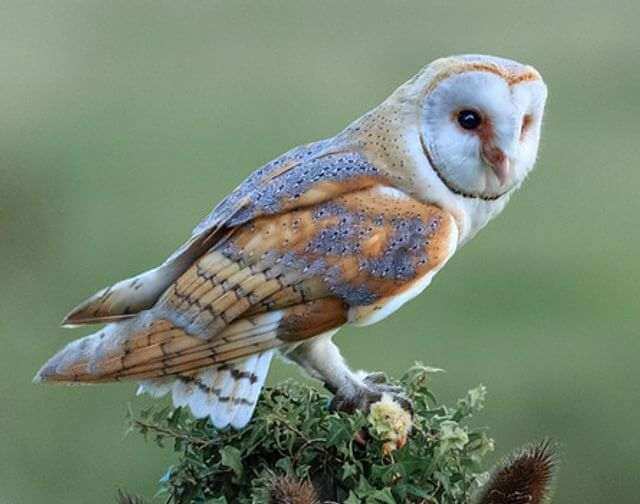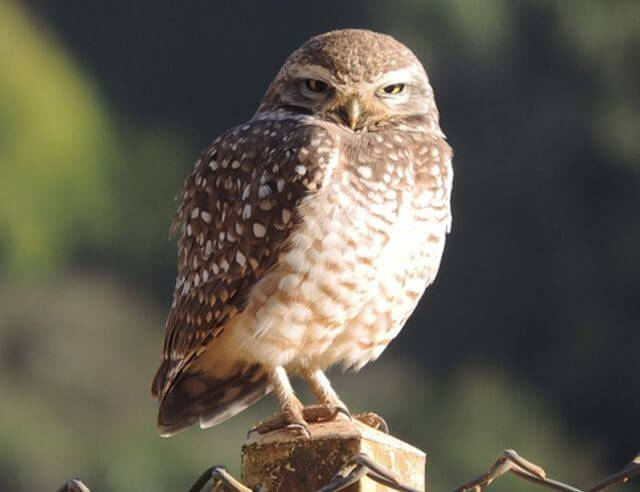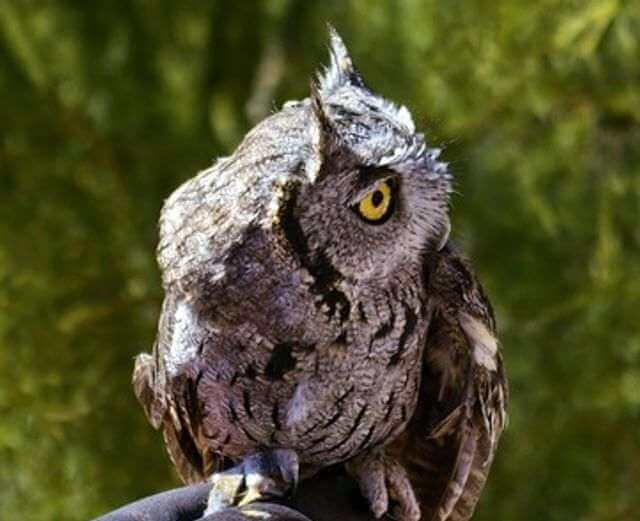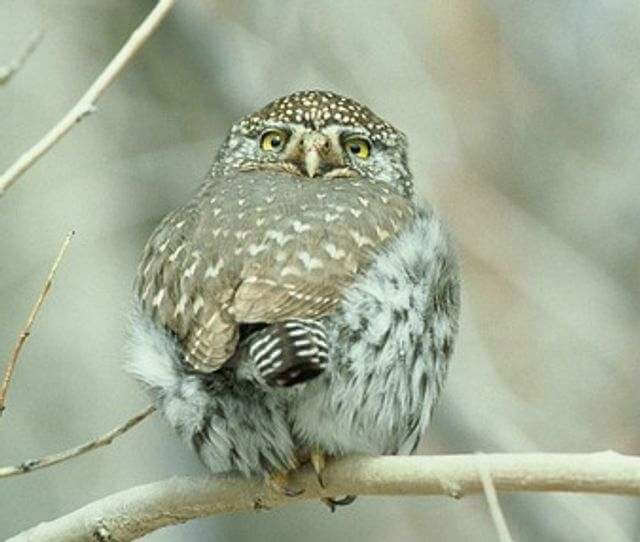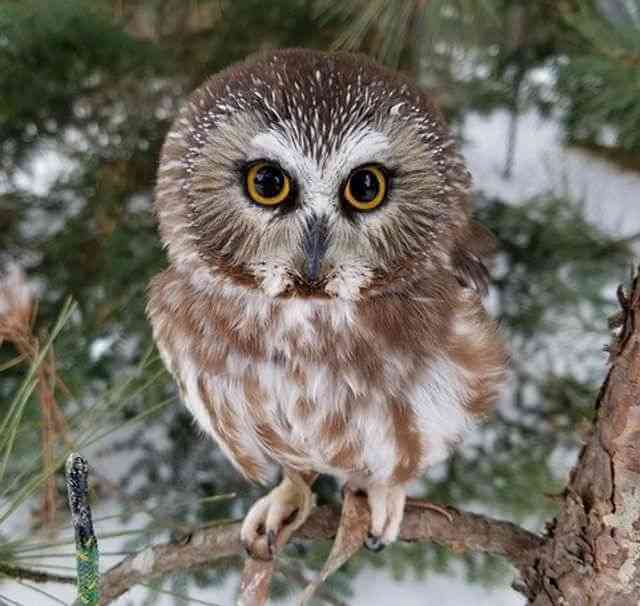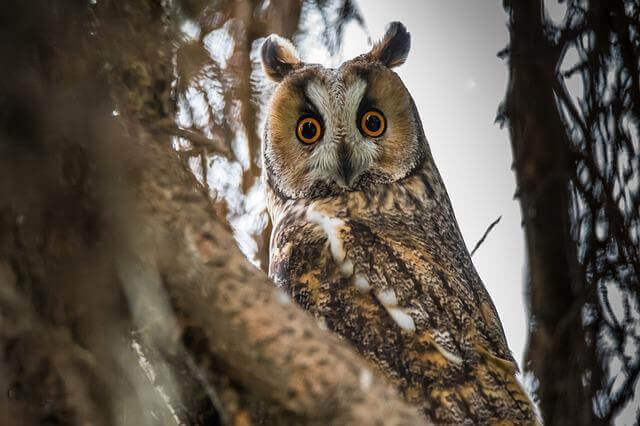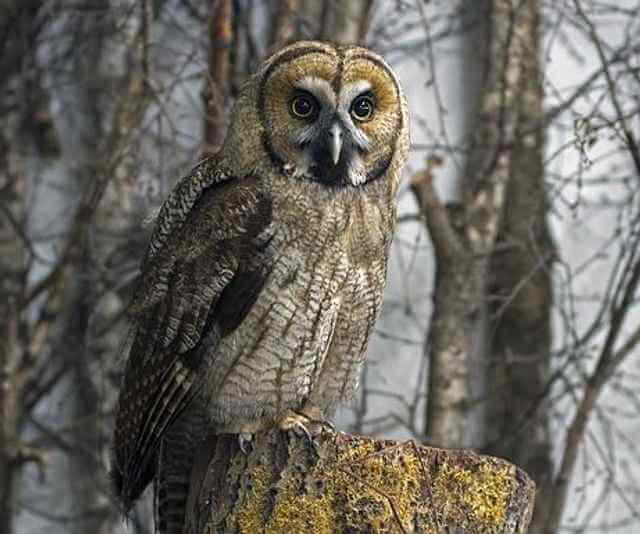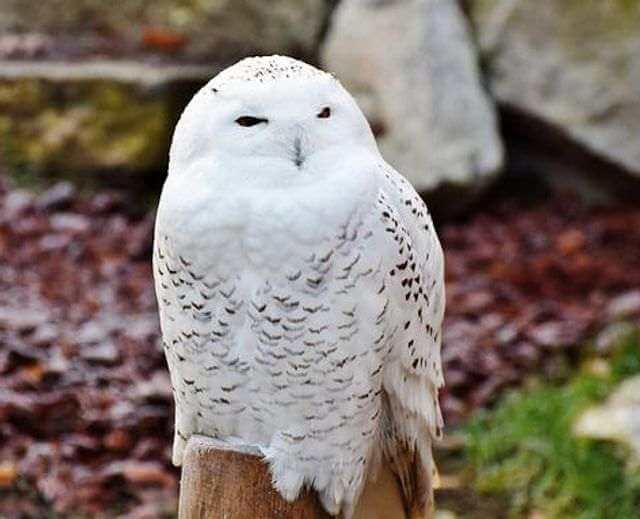Southern California is home to 14 types of owls. These owls can be found in various parts of the state, including the deserts and the coastal areas. Each owl has its own unique look, personality and characteristic calls, which can help identify it.
In this article, we will explore the owls in Southern California along with photos, identification tips, maps, sounds, frequency of occurrence in the area and tons of information on each bird.
Table of Contents
- 1 Types of Owls in Southern California
- 2 Frequently Asked Questions
- 2.1 What is the most common owl in Southern California?
- 2.2 What owls are common in Southern California?
- 2.3 Are there any owls in Southern California?
- 2.4 Do owls live in Los Angeles?
- 2.5 Where can I find owls in Los Angeles?
- 2.6 What bird screeches at night in Southern California?
- 2.7 Are barn owls native to Southern California?
- 3 Author
Types of Owls in Southern California
Great Horned Owl
- Length: 18.1-24.8 in (46-63 cm)
- Weight: 32.1-88.2 oz. (910-2500 g)
- Wingspan: 39.8-57.1 in (101-145 cm)
- Scientific Name: Bubo virginianus
- Frequency of Occurrence: 3.00% (Statistic by: eBird)
- Where To Find Them: They are very adaptable birds and can be found in a variety of locations in Southern California. Some places to look for Great Horned Owls include the Santa Monica Mountains, the San Gabriel Mountains, and Joshua Tree National Park.
- How to Attract: These owls are nocturnal, and usually roost during the day. They are very territorial birds, and will often attack other animals that enter their territory. Great Horned Owls are attracted to areas with plenty of trees for cover, as well as areas with an abundance of small mammals such as rabbits, rats, and mice. They can be attracted to your property by providing a suitable habitat for them and by placing owl nesting boxes in strategic locations.
General Information: The Great horned Owl is a large owl found in North America, Europe, and Asia. In North America, they are found in Alaska, Canada, and the northern United States. In Europe, they are found in Scandinavia and Russia. In Asia, they are found in Siberia and Japan.
Great horned Owl prefer coniferous forests with plenty of old trees for nesting and roosting. They also require open areas for hunting. Great horned Owl eat small mammals such as voles, shrews, rabbits, and hares. They also eat birds, including grouse and ducks.
Great horned Owl build their nests in tree cavities or on the ground. They lay 2-4 eggs, which hatch about 33 days later. The young owls stay with their parents for about 10 weeks.
Related Post: 35 Fun Facts About The Great Horned Owl (Detailed)
Barn Owl
- Length: 12.6-15.8″ in (32-40 cm)
- Weight: 14.1-24.7 oz. (400-700 g)
- Wingspan: 39.4-49.2″ in (100-125 cm)
- Scientific Name: Tyto alba
- Frequency of Occurrence: 1.18%
- Where To Find Them: In Southern California, they can be found in a variety of locations, including the rural areas near Bakersfield and the Antelope Valley, and in more populated areas near Los Angeles and San Diego. They can also be seen in some of the coastal towns like Oceanside and Dana Point.
- How to Attract: Barn owls can be attracted to your property by providing them with a place to perch and hunt. You can do this by installing a barn owl box or platform. The best time to install a barn owl box is in the fall or winter when the owls are looking for a place to roost. You can also attract barn owls to your property by providing them with food. Barn owls eat small rodents such as mice, rats, and voles. You can provide barn owls with food by placing a feeder near their roosting area or nesting box.
General Information: The barn owl is a medium to large bird of prey with a wingspan of approximately 47 inches. They are found in all parts of the world except for Antarctica. Barn owls prefer to live in open habitats such as fields, meadows, marshes, and deserts.
They are also often seen near human habitations, where they hunt small rodents. Barn owls have a diet that consists mostly of small mammals such as rats, mice, voles, and rabbits.
They will also eat birds, amphibians, and insects. Barn owls build their nests in trees hollows or crevices in rocks. The female typically lays 3-7 eggs that hatch after about 28 days. The young barn owls fledge (leave the nest) at about 5 weeks old.
Burrowing Owl
- Length: 7.5-9.8″ in (19-25 cm)
- Weight: 5.3 oz. (150 g)
- Wingspan: 21.6″ in (55 cm)
- Scientific Name: Athene cunicularia
- Frequency of Occurrence: 0.8446%
- Where To Find Them: In Southern California, they can be found in the Antelope Valley, the Mojave Desert, and in locations near the Salton Sea. They are usually seen on the ground, walking or running, and they sometimes perch on utility poles or fence posts.
- How to Attract: Burrowing Owls can be attracted to your backyard by providing an appropriate habitat and food source. To create an ideal habitat for Burrowing Owls, you should provide a mix of open areas and dense cover. This could include a patch of unmowed grassland, a few scattered shrubs, or a hedge row. The owls will also need a place to nest and roost. A stack of old logs or a platform birdhouse will work well. Burrowing Owls feed primarily on small mammals such as ground squirrels, prairie dogs, mice, and voles.
General Information: The Burrowing Owl is a small, long-legged owl found throughout open landscapes of North America. A resident of open country, the Burrowing Owl prefers grasslands, prairies, agricultural fields, and deserts.
This owl is well adapted to life underground and can be found in colonies of up to 100 owls in abandoned burrows dug by other animals. The diet of the Burrowing Owl consists mainly of small mammals such as prairie dogs, ground squirrels, and rabbits.
The breeding season for the Burrowing Owl begins in late winter or early spring and lasts until summer. The female typically lays 2-5 eggs which are incubated for about 28 days.
Related Post: Really Cool Burrowing Owl Facts That Will Amaze You!
Western Screech-Owl
- Length: 7.5-9.8 in (19-25 cm)
- Weight: 3.5-10.8 oz. (100-305 g)
- Wingspan: 21.6-24.4 in (55-62 cm)
- Scientific Name: Megascops kennicottii
- Frequency of Occurrence: 0.5668%
- Where To Find Them: Some of the best places to find western screech-owls are in the foothills of the San Gabriel and San Bernardino mountains, as well as near the coast in places like Malibu and Topanga Canyon. They are also common in agricultural areas, such as the Central Valley and Imperial Valley.
- How to Attract: These owls can be attracted to your backyard if you provide them with the right habitat and food. To create a screech-owl habitat, you will need to provide some trees for cover and nesting, as well as some open areas for hunting. The owls will also need a water source, such as a birdbath or pond. You can attract screech-owls to your yard by putting up a nest box or feeding them mice or other small rodents.
General Information: The Western screech-owl (Megascops kennicottii) is a small owl found in western North America. It ranges from British Columbia to central Mexico, and is absent only from the most arid regions of the southwest.
In the United States, this owl is found mainly in the mountains of the west, though it also inhabits deciduous forests and urban areas. The Western screech-owl is a woodland owl that depends on dense stands of trees for habitat.
It feeds mainly on insects, but also eats small mammals, birds, and reptiles. This owl nests in tree cavities or abandoned buildings, laying 2-6 eggs. The Western screech-owl is threatened by loss of habitat due to deforestation and development.
Northern Pygmy-Owl
- Length: 6.7-7.5″ in. (17-19 cm)
- Weight: 2.2-2.6 oz. (62-73 g)
- Wingspan: 14.5 – 16″ in.
- Scientific Name: Glaucidium californicum
- Frequency of Occurrence: 0.2759%
- Where To Find Them: The best time to see them is usually at dawn or dusk when they are active. Some locations where they can be seen include the Santa Monica Mountains, Simi Hills, and the San Gabriel Mountains.
- How to Attract: Since northern pygmy-owls prefer to live in areas near open spaces, providing a birdfeeder with a variety of food will attract them to your yard. Insects are their main source of food, so offering a mix of birdseed, suet pellets, and mealworms will entice them to visit your feeder. Be sure to place the feeder in an open area where the owls can easily see it from a perch nearby.
General Information: The Northern Pygmy-Owl (Glaucidium californicum) is a small owl found in western North America. This owl is the smallest owl in North America and has a typical wingspan of 14-16″ inches. The Northern Pygmy-Owl inhabits open forests and woodlands, preferring areas with plentiful perches and dense understory.
They are non-migratory birds and can be found in a variety of habitats including coniferous forests, deciduous forests, riparian corridors, agricultural land, and urban parks.
The diet of the Northern Pygmy-Owl consists mainly of insects, but they will also consume small mammals, reptiles, and amphibians. They typically hunt from a perch, swooping down on prey items with their talons.
Northern Saw-whet Owl
- Length: 7.1-8.3 in (18-21 cm)
- Weight: 2.3-5.3 oz. (65-151 g)
- Wingspan: 16.5-18.9 in (42-48 cm)
- Scientific Name: Aegolius acadicus
- Frequency of Occurrence: 0.2084%
- Where To Find Them: The Northern Saw-whet Owl can be found in locations in Southern California. One place to find these owls is the Santa Monica Mountains National Recreation Area, where they reside in the conifer and oak woodlands. The owls can also be found in other areas of the Los Padres National Forest.
- How to Attract: These owls are most active at night and can be attracted to your backyard with some simple tips. One way to attract Northern Saw-whet Owls is by providing them with a roosting box. This can be done by constructing a wooden box yourself or purchasing one from a store. The box should be large enough for the owl to fit inside and placed in an area where the owl can easily see it from a perch. Another way to attract these owls is by placing food out for them. They prefer small prey such as mice, rats, and insects. You can place food out in a variety of ways, such as placing it in a feeder or scattering it on the ground.
General Information: Northern saw-whet owls are one of the smallest owl in North America. They have a round head, no ear tufts, and a brown face with white stripes. The body is gray with light barring on the chest and belly. These owls have a wingspan of about 36 inches and weigh about five ounces.
Northern saw-whet owls are found from central Alaska across Canada to Newfoundland, and south through the Rocky Mountains and into Mexico. In the east, they are found from Maine to Florida. These owls live in dense forests near water where they can find small mammals such as mice, rats, and voles to eat.
They also eat birds, insects, and amphibians. Saw-whet owls build their nests in trees or bushes, usually close to the ground. The female lays four to six eggs which she incubates for about 27 days.
Related Post: What is the Smallest Owl in North America?
Short-eared Owl
- Length: 13.4-16.9 in (34-43 cm)
- Weight: 7.3-16.8 oz. (206-475 g)
- Wingspan: 33.5-40.5 in (85-103 cm)
- Scientific Name: Asio flammeus
- Frequency of Occurrence: 0.1481%
- Where To Find Them: In California, they can be found in the Central Valley, the Sacramento Valley, and the San Joaquin Valley. They can also be found in the foothills of the Sierra Nevada and the Coast Ranges.
- How to Attract: First, try to create an open space with some taller grass or weeds for the owl to hunt in. You can also provide a perch for the owl, such as a tall tree or telephone pole. Finally, make sure there are plenty of small rodents around for the owl to eat. If you can provide all of these things, you may be lucky enough to get a visit from this beautiful bird!
General Information: Short-eared owls are one of the most widespread owl species in the world. They inhabit open country and marshes in North America, Europe, Asia, and Africa. In North America, they are most common in the prairies of the Great Plains and in open woodlands and agricultural areas of the East.
Short-eared owls prey on a variety of small animals, including rodents, rabbits, bats, reptiles, amphibians, and insects. They typically hunt by perched atop a post or other high spot and scanning the ground for prey. They also hunt by flying low over fields and marshes.
Short-eared owls nest on the ground in tall grass or other dense cover. The female lays 2-6 eggs that are incubated by both parents for about 28 days. The young owls fledge at about 4 weeks old.
Long-eared Owl
- Length: 13.8-15.8 in (35-40 cm)
- Weight: 7.8-15.3 oz. (220-435 g)
- Wingspan: 35.4-39.4 in (90-100 cm)
- Scientific Name: Asio otus
- Frequency of Occurrence: 0.1360%
- Where To Find Them: In Southern California, they can be found in locations such as the San Bernardino National Forest, the Angeles National Forest, and the Cleveland National Forest. Long-eared owls can also be found in open areas near bodies of water such as lakes and reservoirs.
- How to Attract: They live in wooded areas and prefer to stay near trees, so if you’re looking to attract one to your property, you’ll need to provide plenty of trees and dense vegetation. You can also provide a perch for them, such as a tall post or platform, as well as a place for them to nest. Long-eared owls are insectivores, so you can attract them by putting out some bird feeders that offer insects instead of seeds.
General Information: The Long-eared Owl is a medium-sized owl that ranges in size from 14-16″ inches in length. They have long, feathery ear tufts that give them their name. These birds can found in North America, Europe, and Asia. In North America, they are found in the southcentral and eastern United States.
The Long-eared Owl prefers dense forests or woodlands for their habitat. They can also be found in open areas with scattered trees or groves. They typically inhabit areas near water sources.
Their diet consists of small mammals such as mice, voles, and other small rodents. They will also eat amphibians, birds, insects, birds, and reptiles. The Long-eared Owl nests in tree cavities or old nests of other birds.
Spotted Owl
- Length: 18.5-18.9 in (47-48 cm)
- Weight: 17.6-24.7 oz. (500-700 g)
- Wingspan: 39.8 in (101 cm)
- Scientific Name: Strix occidentalis
- Frequency of Occurrence: 0.0728%
- Where To Find Them: They prefer to live in tall, old-growth forests near bodies of water. Some of the best places to spot them include the Angeles National Forest, San Gabriel Mountains, and the Santa Monica Mountains. They can also be seen in certain areas near the Orange County and San Diego County coastlines.
- How to Attract: Spotted owl populations are declining, and there are many things people can do to help attract them to their property. One way is to provide a roosting and nesting site. This could be in the form of an artificial tree or platform, or a natural tree with large branches. Dead trees are also beneficial, as they provide homes for insects that spotted owls eat. Nest boxes can also be used to attract these owls. If you live in an area where spotted owls reside, avoid cutting down trees that they may use for shelter or food, and consider leaving some dead trees standing.
General Information: The Spotted Owl is a medium-sized owl that is found in the forests of western North America. These owls have a range that extends from British Columbia in Canada to central Mexico. In the United States, spotted owls can be found in Oregon, Washington, California, Idaho, and Montana.
Spotted owls prefer old-growth forests with large trees and plenty of dense cover. They are typically found near streams or other water sources. These owls eat a variety of prey, including small mammals, birds, amphibians, and reptiles.
Spotted owls nest in tree cavities or abandoned nests made by other animals. The female lays 2-4 eggs and both parents help incubate the eggs and care for the young.
Flammulated Owl
- Length: 5.9-6.7 in (15-17 cm)
- Weight: 1.5-2.2 oz. (43-63 g)
- Wingspan: 15.9-16.1 in (40.5-41 cm)
- Scientific Name: Psiloscops flammeolus
- Frequency of Occurrence: 0.0312%
- Where To Find Them: In Southern California, they can be found in the mountains and foothills from Ventura County north to Tulare County.
- How to Attract: They are not common birds, so people may not know how to attract them. The best way to attract these owls is to provide them with a large open area with mature trees for nesting and roosting. You can also provide them with a water source, such as a pond or stream.
General Information: The flammulated owl is a small owl that is found in western North America. The range of the flammulated owl extends from British Columbia in Canada to central Mexico. In the United States, the flammulated owl is found in Washington, Oregon, California, Nevada, Utah, Colorado, New Mexico, and Arizona.
They inhabit coniferous forests and aspen groves, and can be found in elevations of up to 12,000 feet. These owls are insectivores and eat a variety of insects, including beetles, caterpillars, grasshoppers, and spiders.
They also consume small mammals, such as mice and shrews. Flammulated Owls build their nests in tree cavities or abandoned nests of other birds. The female lays between 2-6 eggs and incubates them for about 28 days. The young owls fledge at around six weeks old.
Barred Owl
- Length: 16.9-19.7″ in (43-50 cm)
- Weight: 16.6-37.0 oz. (470-1050 g)
- Wingspan: 39.0-43.3″ in (99-110 cm)
- Scientific Name: Strix varia
- Frequency of Occurrence: 0.0221%
- Where To Find Them: In Southern California, they can be found in many different locations, including the Santa Monica Mountains, the Angeles National Forest, and near Big Bear Lake.
- How to Attract: They are easily attracted to areas where there is an abundance of food and cover. In order to attract barred owls, you should provide a food source, such as mice or rats, and a place for them to roost, such as a dead tree or tall shrub. You can also install a nest box to help encourage them to breed in your area.
General Information: The barred owl is a common sight in wooded areas of North America. The owl’s range extends from Canada to Mexico, and from the Atlantic coast to the Rocky Mountains.
Barred owls prefer dense woods near waterways, but can also be found in open areas with scattered trees. The barred owl’s diet consists mostly of small mammals, such as rodents, rabbits, and hares.
The owl will also eat birds, insects, reptiles, and amphibians. Barred owls nest in tree cavities or on platforms of sticks built high in a tree. The female lays 2-4 eggs and incubates them for about 28 days. The young owls fledge at about 8 weeks old.
Great Gray Owl
- Length: 24.0-33.1 in (61-84 cm)
- Weight: 24.7-60.0 oz. (700-1700 g)
- Wingspan: 53.9-60.2 in (137-153 cm)
- Scientific Name: Strix nebulosa
- Frequency of Occurrence: 0.0142%
- Where To Find Them: Some of the best places to see these owls are in the San Gabriel Mountains, Santa Monica Mountains, and the Cleveland National Forest. They can also be seen near large bodies of water such as Lake Perris and Castaic Lake.
- How to Attract: Great Gray Owls are notoriously hard to attract and even harder to keep around. In order to even have a chance at attracting one, you need to provide them with plenty of open space for hunting and perching as well as several large trees for nesting. You’ll also need to supply a water source and plenty of small prey like rodents. If you can provide all of that, there’s still no guarantee that an owl will take up residence, but it’s worth a try!
General Information: The Great Gray Owl is found in a variety of habitats, including coniferous and mixed forests, open country with scattered trees, and riparian corridors. In North America, the species ranges from Alaska to Newfoundland and south through much of the western United States to central California and northern Baja California.
The diet of the Great Gray Owl consists primarily of small mammals such as voles, meadow mice, white-footed mice, shrews, and lemmings. The owl will also take birds up to the size of a ruffed grouse and occasionally hares and rabbits.
They usually hunt from a perch, but may also fly low over the ground in search of prey. Great Gray Owls nest in cavities in trees or large boulders. The female lays 2-4 eggs, which are incubated for 28-32 days.
Related Post: 53 Fun Facts About The Great Gray Owl (Photos, ID & Info)
Snowy Owl
- Length: 20.5-27.9 in (52-71 cm)
- Weight: 56.4-104.1 oz. (1600-2950 g)
- Wingspan: 49.6-57.1 in (126-145 cm)
- Scientific Name: Bubo scandiacus
- Frequency of Occurrence: 0.0022%
- Where To Find Them: The snowy owl is a beautiful bird that can be found in many locations throughout Southern California. One place to spot them is at the Santa Monica Pier, where they can often be seen perched on the railing or flying overhead. They can also occasionally be spotted at the Hollywood Bowl and in other parks throughout the area.
- How to Attract: People who want to see a snowy owl up close may be able to do so by attracting them to their backyard. One way to do this is by putting out food for the birds, such as mice, rats, or rabbits. Another way is to provide a perch for the owl, such as a large tree branch or fence post. If you live near an open area where snowy owls are known to roam, you may also want to place some fake owls or other bird decoys in your yard to attract the real thing.
General Information: Snowy Owls are one of the most recognizable owl species in North America. They are also one of the most widespread, being found in Canada, Alaska, and throughout the northern United States. However, their range is not continuous, and there are areas where they are not found at all.
The Snowy Owl’s habitat varies depending on the season. They can be found in open fields, tundra, coastal areas, and even in urban areas during winter. In the summertime, they move to Arctic and sub-Arctic regions where they live in open country with little vegetation.
The diet of a Snowy Owl depends on what is available in their habitat. They eat small mammals such as lemmings, voles, and rabbits; as well as birds such as ducks and seagulls. They will also eat insects and fish.
Related Post: 48 Fun Facts About Snowy Owls (with Photos, ID & Info)
Elf Owl
- Length: 4.7-5.5 in (12-14 cm)
- Weight: 1.2-1.9 oz. (35-55 g)
- Wingspan: 13.0 in (33 cm)
- Scientific Name: Micrathene whitneyi
- Frequency of Occurrence: 0.0021%
- Where To Find Them: Some of the best places to see Elf Owls in Southern California include Anza-Borrego Desert State Park, Joshua Tree National Park, and the Santa Rosa and San Jacinto Mountains National Monument. These owls can also be spotted at various other state and federal parks, as well as in agricultural areas and along desert roadsides.
- How to Attract: They are attracted to areas that have dense vegetation and plenty of insects. There are a few things you can do to help attract these owls to your backyard. First, make sure you have a good supply of insects for them to eat. This can be done by adding a few rocks or boards to your yard so that the insects can hide underneath. You can also plant some trees and shrubs that will provide them with food and shelter. Second, create a safe place for them to roost. Elf Owls like to find a place where they can feel safe from predators. You can do this by creating a roosting box out of wood or metal.
General Information: Elf Owls (Micrathene whitneyi) are small, round owls with a length of about 5″ inches and a wingspan of 13″ inches. They are the smallest owl in North America. Elf Owls are found in open country and semi-arid habitats in western North America from British Columbia to Baja California.
They live in pine-oak woodlands, cottonwood groves, and riparian corridors. Elf Owls eat insects, primarily grasshoppers and crickets, as well as spiders, scorpions, and centipedes.
They also eat small lizards and bats. Elf Owl nests are made of sticks and lined with soft materials such as feathers or fur. Nests are usually placed in tree cavities, but may also be placed on cliff ledges or buildings. Elf Owls typically lay 2-4 eggs.
Related Post: 40 Most Common Backyard Birds In California (Detailed)
Frequently Asked Questions
What is the most common owl in Southern California?
The most common owl in Southern California is the great horned owl. These owls are typically 3 percent frequency of occurrence, making them the most common owls in the state.
Great horned owls are well-adapted to living in a wide range of habitats and can be found in forests, deserts, and even urban areas. They are opportunistic predators that feed on a variety of prey items, including small mammals, birds, reptiles, and amphibians.
What owls are common in Southern California?
Owls are usually a rare sight in Southern California, but the two owl species that are most commonly seen are the Great Horned Owl at 3% frequency and the Barn Owl at 1.18% frequency of occurrence. The Great Horned Owl is a large owl that is often seen perched on tall trees or utility poles.
This owl is known for its loud hoot, which can be heard up to one mile away. The Barn Owl is a small owl that is typically found in open areas, such as fields and meadows. This owl has very distinctive heart-shaped facial disks that help it to hear prey moving underground.
Are there any owls in Southern California?
Some of the most common owls in Southern California are the great horned owl, barn owl, and burrowing owl. These species can typically be seen throughout the year, although they may be more difficult to find during the summer months.
The spotted owl and barred owl are also common in the area, but they are more elusive and can only be found during certain times of the year. The northern saw-whet owl is also present in Southern California, but it is rare and usually only seen during winter months.
Do owls live in Los Angeles?
There are 14 different species of owls that can be seen in Los Angeles during different periods of the year. Some owls, like the barn owl and great horned owl, can be found throughout the year. However, other species, like the pygmy owl and saw-whet owl, are only present during certain months.
Owls can be found in a variety of habitats, from forests to city parks. So while it’s not always easy to spot an owl in Los Angeles, they’re definitely out there!
Where can I find owls in Los Angeles?
There are many places in Los Angeles to find owls. Griffith Park is an excellent place to begin. There are often barred owls there, and they can be quite easy to spot during the day.
Other good places to look for owls include the Santa Monica Mountains, the Sepulveda Basin Wildlife Preserve, and any other area with large trees and plenty of prey.
Owls can be very elusive, so it may take some time and patience to spot one in the wild. With a little effort, though, it’s definitely possible to see these fascinating creatures in Los Angeles.
What bird screeches at night in Southern California?
Some of the most common night screechers include the Great Horned Owl, the Western Screech-Owl, and the Barn Owl. These birds are known for their distinct hooting calls, which can be heard echoing through the woods or neighborhoods during the late evening and early morning hours.
Other bird species that may be heard screeching at night include the American Kestrel, the Northern Harrier, and the Virginia Rail. While their calls may not be as familiar to most people, they can still be quite loud and annoying when trying to get a good night’s sleep!
Are barn owls native to Southern California?
Yes, barn owls are native to Southern California and can be found throughout the region. They prefer open habitats like grasslands, agricultural land, and woodland edges. Barn owls are cavity nesters and typically use abandoned buildings, trees, or other natural features for their homes.

